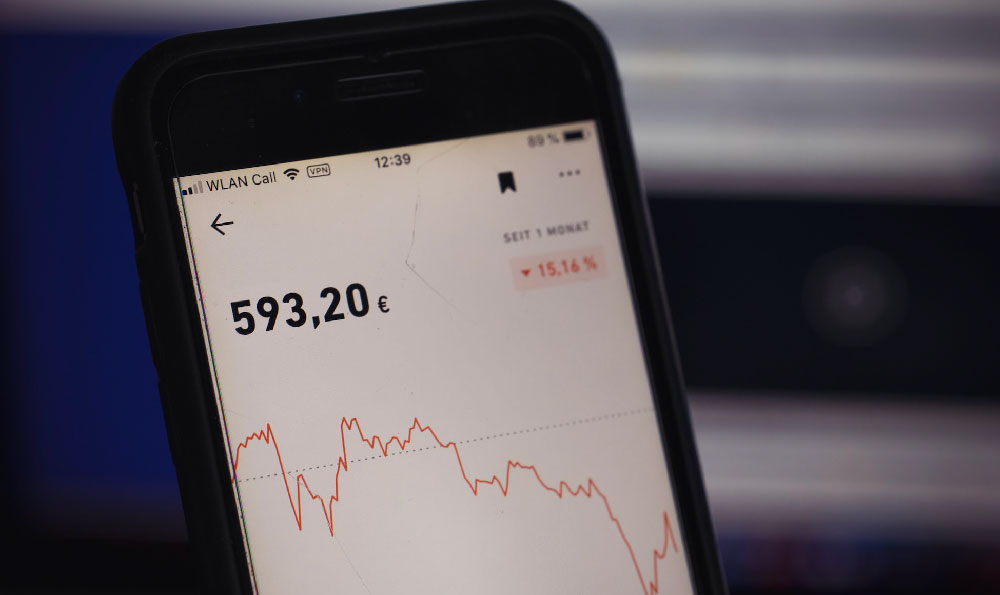Unlocking the Potential of Coinbase: A Comprehensive Guide to Profitable Cryptocurrency Trading
Cryptocurrency trading has evolved from a niche interest into a mainstream financial activity, and platforms like Coinbase have become pivotal in bridging the gap between novice investors and the dynamic crypto market. With its user-friendly interface and robust security protocols, Coinbase offers a gateway to opportunities in digital assets, but navigating it profitably requires more than just setting up an account. This guide explores the strategic framework for generating returns on Coinbase, balancing technical analysis, market insights, and risk management to help users avoid pitfalls and build sustainable wealth.
Understanding the Market Dynamics

To profit on Coinbase, one must begin by dissecting the broader market trends that influence cryptocurrency prices. Unlike traditional markets, the crypto landscape is highly volatile, driven by factors such as regulatory changes, technological advancements, macroeconomic indicators, and global events. For instance, the release of a new blockchain protocol or a major institutional investment can trigger sharp price fluctuations. Reddit communities and social media platforms often buzz with speculation, but it’s essential to distinguish between noise and meaningful signals.
A strong foundation lies in analyzing the demand and supply of specific cryptocurrencies. The price of Bitcoin, for example, is often tied to its adoption rate, network activity, and halving events, which reduce the rate of new coin creation and can create scarcity. On Coinbase, users can leverage tools like the "Market" tab to track real-time data, volume trends, and price movements. Paying attention to how these metrics interact over time—such as a rising price coupled with decreasing trading volume—can signal potential overvaluation or market fatigue.
Mastering Technical Indicators
While fundamental analysis provides context, technical indicators offer actionable insights for timing trades. The Relative Strength Index (RSI) measures the speed and change of price movements, helping identify overbought or oversold conditions. For example, an RSI above 70 may indicate a cryptocurrency is due for a correction, while one below 30 could suggest a buying opportunity. Similarly, moving averages—like the 50-day and 200-day lines—can highlight trends, with crossovers often signaling market direction.
Volume analysis is another critical component. A rising price accompanied by increasing volume typically validates strength, while a decline with low volume may indicate weakness. Coinbase’s integrated order book allows users to observe volume patterns at a glance, enabling informed decisions about entry and exit points. Additionally, chart patterns such as head-and-shoulders or triangles can provide visual cues about potential price reversals or continuations, though these should be corroborated with other tools to avoid false signals.
Strategic Approaches for Profitability
Profitability on Coinbase hinges on adopting a well-rounded strategy that aligns with individual goals and risk tolerance. Long-term holding (HODLing) remains a popular approach, particularly for those who believe in the transformative potential of blockchain technology. The compounding effect of holding onto Bitcoin or Ethereum during periods of price growth can yield substantial returns over time, but this strategy demands patience and the ability to withstand short-term volatility.
For those seeking shorter-term gains, swing trading and day trading present viable options. Swing traders aim to capture price swings within a defined time frame—often days to weeks—by analyzing intermediate-term trends. This requires a disciplined approach to setting targets and stop-loss levels to minimize losses. Day traders, on the other hand, focus on intraday price movements, leveraging tools like limit orders and market orders to execute trades swiftly. However, this method carries higher risk due to its reliance on real-time market sentiment and technical analysis.
Diversification is a key principle to mitigate risk while maximizing potential returns. By allocating capital across multiple cryptocurrencies, users can balance exposure to different sectors of the market, such as DeFi, NFTs, or institutional-grade assets. Coinbase’s portfolio management features enable users to categorize holdings and monitor performance, making it easier to adjust strategies as needed. Nevertheless, diversification should not compromise focus; concentrating on a few high-potential assets with strong fundamentals may yield better results than spreading resources thin.
Risk Management: The Cornerstone of Success
Even the most promising opportunities can turn into losses without proper risk management. On Coinbase, users should prioritize setting up a secure account, enabling two-factor authentication, and storing funds in hardware wallets for long-term holdings. However, security is only one aspect—financial discipline is equally critical.
A critical risk management technique is position sizing: limiting the amount of capital allocated to each trade. For example, if a user risks 2% of their portfolio on a single trade, they can protect themselves from significant drawdowns. STOP-LOSS orders, available on Coinbase, allow users to automatically sell an asset if it falls below a specified price, preventing emotional decisions during market downturns. Conversely, TAKE-PROFIT orders lock in gains when a cryptocurrency reaches a user-defined price point.
Market psychology also plays a role in risk management. Fear of missing out (FOMO) can drive irrational decision-making, while panic during crashes may lead to selling at a loss. Developing a clear trading plan with predefined entry and exit strategies helps maintain objectivity, even in turbulent conditions. Users should also avoid over-leveraging, as margin trading can amplify losses in volatile markets.
Avoiding Common Pitfalls and Scams
The cryptocurrency ecosystem is rife with scams and deceptive practices, and Coinbase users must be vigilant. One of the most prevalent risks is falling for fake projects or pump-and-dump schemes, which often target less experienced traders. To avoid such pitfalls, users should conduct thorough due diligence before investing in any cryptocurrency, researching its technology, team, and real-world applications.
Another red flag is the allure of high-yield staking or yield farming opportunities, which can promise unrealistic returns. While these strategies may offer short-term gains, they often come with hidden risks, such as smart contract vulnerabilities or liquidity issues. Users should evaluate staking rewards against the potential for loss and prioritize projects with transparent governance structures.
Furthermore, the rise of alternative trading platforms and decentralized exchanges (DEXs) has created competition for Coinbase, but it’s important to assess the trade-offs. While DEXs may offer lower fees and greater privacy, they often lack the security and ease of use provided by centralized exchanges like Coinbase. Users should also avoid emotional trading, especially in the wake of market crashes or sudden price surges, by adhering to their pre-defined plan rather than reacting impulsively.
Building a Sustainable Crypto Portfolio
The ultimate goal of any investor is to create a portfolio that generates consistent returns while maintaining stability. On Coinbase, users can benefit from automated tools like Savings Accounts, which offer interest rates on stablecoins, or the Portfolio feature, which tracks performance across multiple assets. However, these tools should complement, not replace, active strategy development.
A long-term perspective is essential for sustainable growth. The blockchain industry is still in its nascent stage, and many projects require time to mature. Users should avoid chasing short-term gains and instead focus on fundamentals, such as a cryptocurrency’s use case, adoption rate, and development roadmap. Additionally, staying informed about regulatory developments is crucial, as governments around the world are increasingly scrutinizing cryptocurrency activities.
In conclusion, profitability on Coinbase requires a blend of market awareness, technical expertise, and disciplined risk management. By analyzing trends, mastering indicators, and avoiding common pitfalls, users can navigate the crypto market with confidence. Whether they choose long-term holding, swing trading, or day trading, the key is to stay informed, adapt to market conditions, and prioritize security and stability. The journey to financial growth through cryptocurrency is not without challenges, but with the right approach, it can be a rewarding path.












